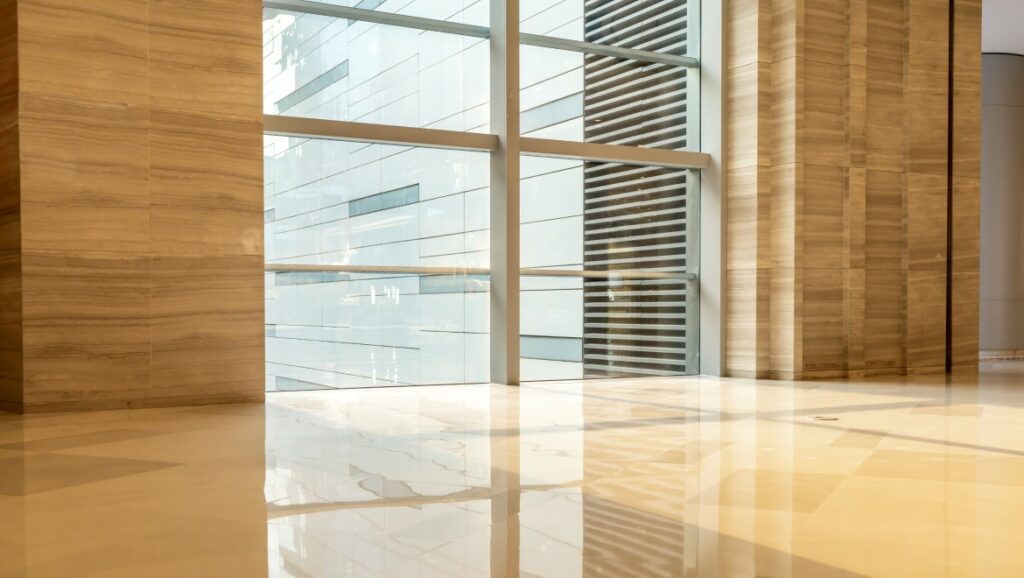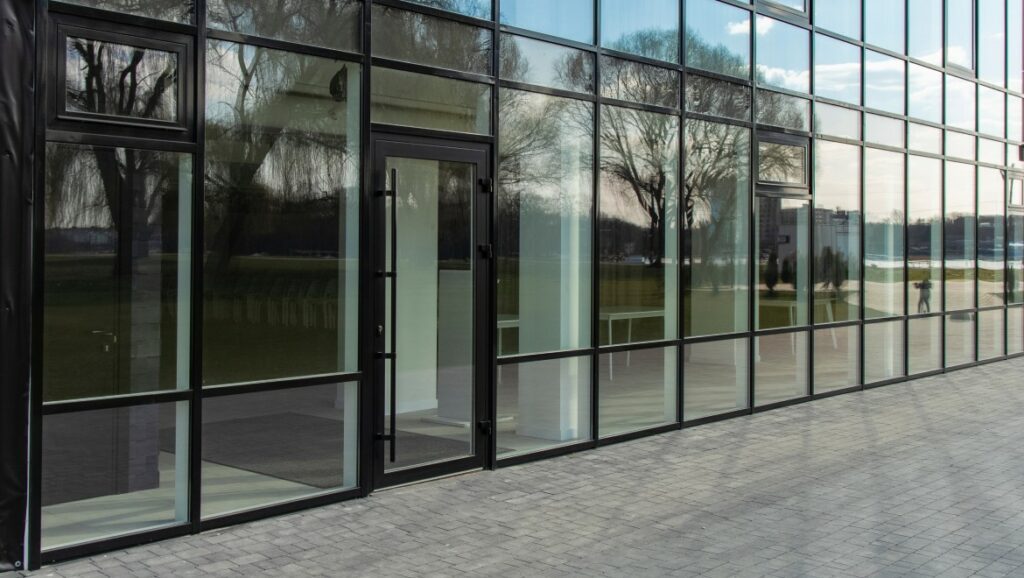Fire rated glass often goes completely unnoticed. It appears to be just a transparent and ordinary pane of glass – however, if a fire was to start, its presence can quickly become a matter of life or death. This specialist construction material offers effective resistance in the face of flames, heat and smoke and it has an incredibly important role to play with respect to building fire safety.
In the following blog, we take a look at how fire resistant glass actually protects against fire, first exploring its unique construction and subsequently detailing its various ratings.

The unique construction of fire rated glass
Whilst standard window glass will typically break at 250°F and toughened glass at around 500°F, fire rated glass can successfully withstand temperatures in excess of 1600°F. But why?
The main reason for this difference is due to its construction. Fire rated glass is made from several layers of toughened glass with intumescent interlayers. In the presence of a fire, the glass closest to the flames quickly heats up and will shatter into tiny pieces. This shattering effect ‘activates’ the intumescent interlayer – causing it to expand and effectively repelling the flames, heat and smoke.
A wire frame is also commonly added to the structure, which not only holds the shattered pieces in place during a fire, but also adds to its overall level of safety and security. Fire rated glass creates an effective barrier, separating one room from another and preventing flames from quickly spreading. It reduces the amount of destruction caused and allows time for people to safely escape.
Ratings of fire glass
Once it has been manufactured, fire rated glass is subject to a range of rigorous tests. These tests determine the performance of the glass in the face of fire, ensuring that it is viable for use in emergency situations and – based on the results – the glass is given an official fire protection rating.
Testing takes place in a controlled environment and 2 key measurements are taken. These include:
1. Integrity (E)
Integrity is the length of time that the glass remains in its frame and successfully blocks the flames and smoke. It is the level of fire protection provided by the glass and it is typically measured in periods of time, upwards of 30 minutes. For example, fire rated glass with a rating of E30 would prevent the spread of flames from one room to another for at least half an hour.
2. Insulation (I)
Insulation is the length of time that glass will maintain the temperature, on the non-fire side of the glass, at a safe level. Essentially, it is the level of heat protection provided by the glass and it is also measured in periods of time. For example, glass rated as I30 offers a 30 minute insulation period.
In some instances, glass is given a W rating instead. This means that it provides some resistance to heat, albeit for an undetermined length of time.

Fire rated glass at Express Glass Warehouse
As one of the leading manufacturers and suppliers in the UK, Express Glass Warehouse currently offers three types of fire rated glass. These include Pyrobel 7.9 Fire Glass, Georgian Wire Cast Glass, and Georgian Wire Polished Glass. Each type has an integrity rating of 30 minutes or more, they offer varying levels of insulation, and they can be used in a number of different applications – such as fire rated windows, glass doors, vision panels, and partitions.
If you would like to find out more about how fire rated glass actually works, or which type of fire safety glass is best for your needs, please feel free to get in touch. Our team of experts demonstrate a wealth of knowledge and experience in this area and they are always happy to help. Either call us today on 020 8500 1188 or send an email to info@expresstoughening.com.

